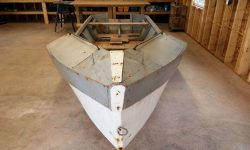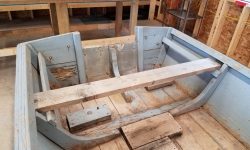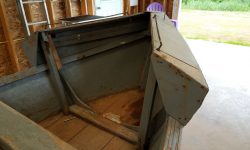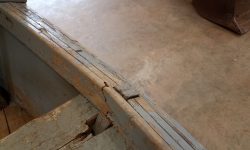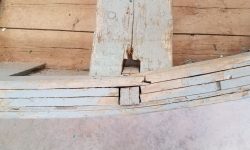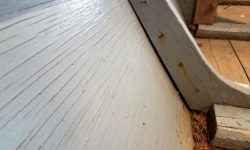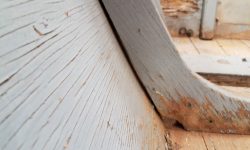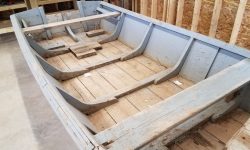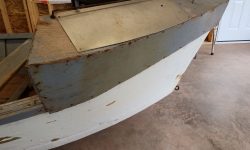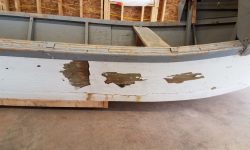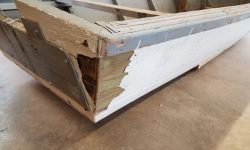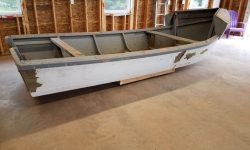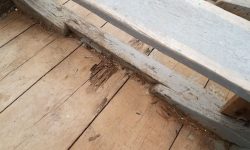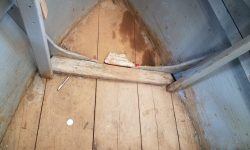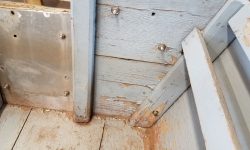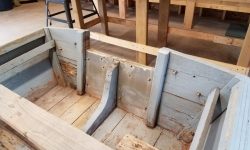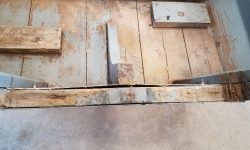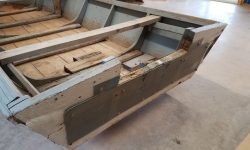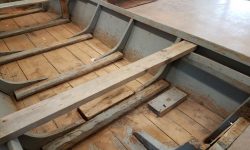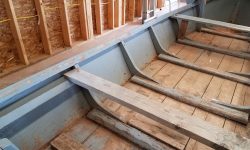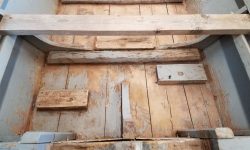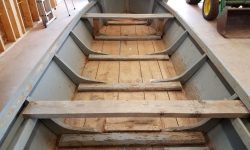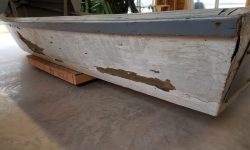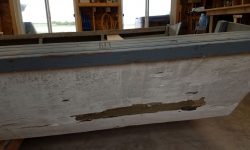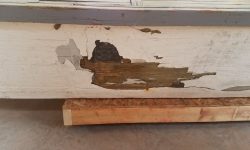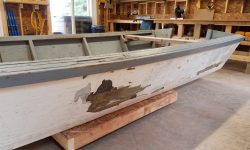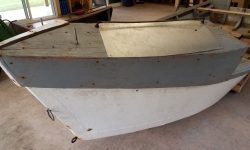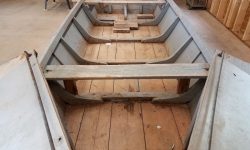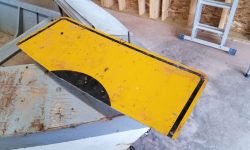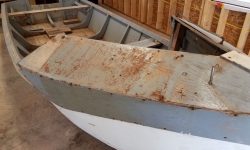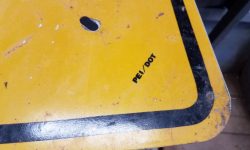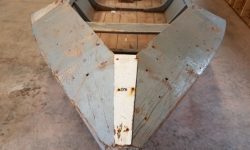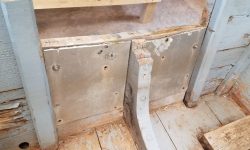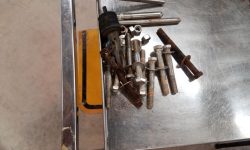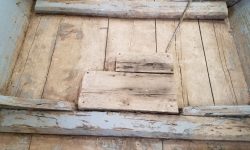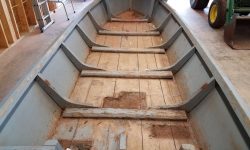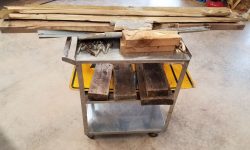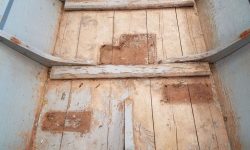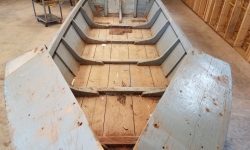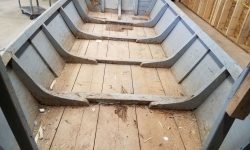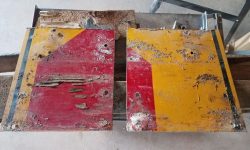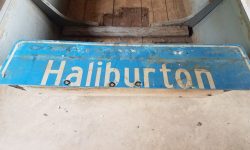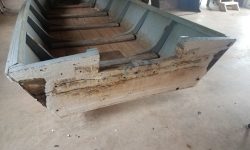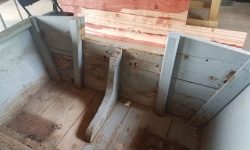June 29, 2018
Dory 2
Friday
The first steps in any project always involve assessment and dismantling, and the dory was no exception. Now ready to begin the restoration (using the term quite loosely), I once more inspected the vessel and documented the initial condition for posterity. The nature of the boat’s requirements and design mantra meant that construction was basic and functional–no frills or fancy detail to be seen in this pure workboat. The bottom and transom were constructed of 2″ thick rough planks, while the topsides were 3/8″ thick plywood (it appeared to be pressure-treated ply), with laminated plywood frames, solid wood floors (using true nomenclature here to refer to the structural cross members across the bottom of the boat and connecting the frames), and gunwales formed from basic inexpensive strapping material.
At the bow, there was a built-on, raised section, known as tong boards, where an oyster fisherman would stand and rest the long-handled oyster tongs for harvesting the shellfish. While the tong boards had no particular use for me and how I planned to use the boat, I liked the look and planned to keep them.
Most of my work on this project would revolve around various fiberglass repairs to deal with the loose sheathing on portions of the hull, and to generally clean up and improve the appearance of the boat. In the main, the overall structural condition was fairly sound and would do what I needed (which wasn’t much), and my biggest challenge with this project would be to limit my natural inclination to do more or make a better finish, rather than keep this basic boat at the workboat-level finish and quality of repair needed.
To begin, I removed whatever I could from the interior, including the cross thwarts, some stringers at the transom corners, wooden blocking on the bottom (purpose still unknown), and some of the aluminum sheathing from the tops of the tong boards. I was interested to see that these sheets were actually recycled road signs–the real question was, were they old signs that someone repurposed, or (just as likely) did someone help themselves to the handy supply of road signs still in use by the side of the road? During this dismantling, I had to wait several days before I could remove all the through-bolts securing the aluminum signs fastened to the transom, as the threads were stripped on several bolts and I didn’t have a cutting tool on hand at my remote shop. Eventually, I got the tool I needed and removed the offending bolts, completing the dismantling process.
Total time on this job today: 1 hour


